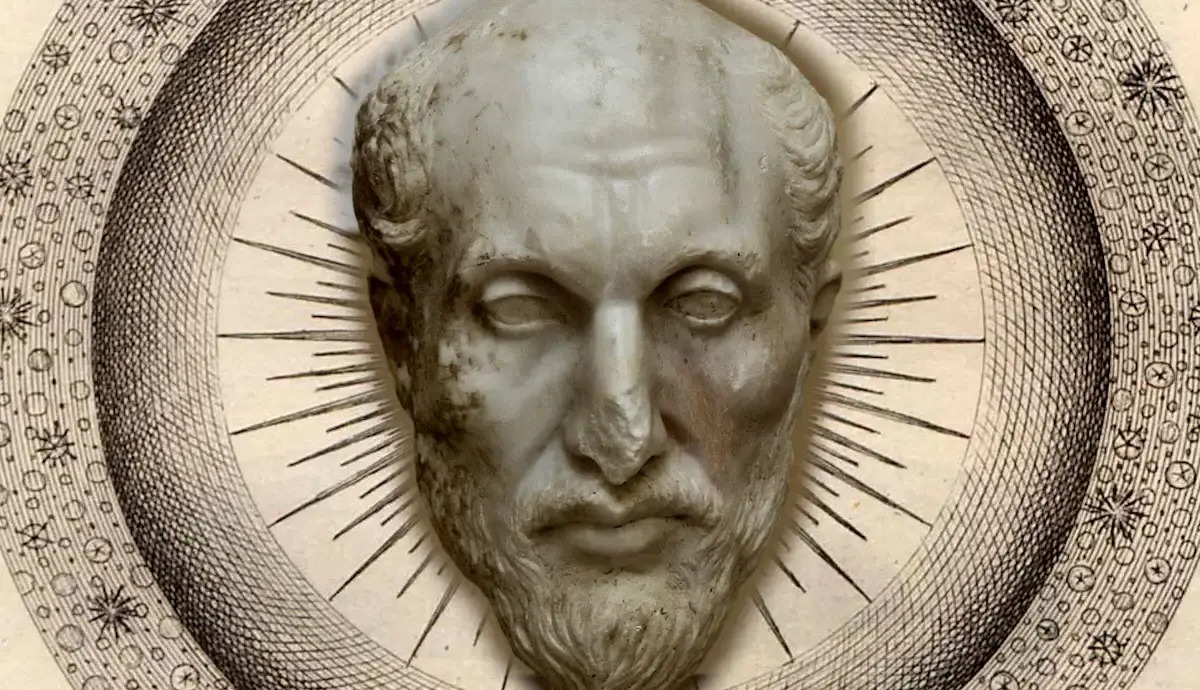
What is Neoplatonism? Neoplatonism is a philosophical system that emerged in the 3rd century AD, blending ideas from Plato, Aristotle, and Stoicism. Founded by Plotinus, it emphasizes a hierarchical structure of reality, with the One at the top, followed by the divine intellect (Nous), the Soul, and matter. This philosophy explores the nature of existence, the soul's journey, and the practice of theurgy—rituals aimed at achieving spiritual ascent. Neoplatonism influenced early Christianity, medieval thought, and the Renaissance, leaving a lasting impact on Western philosophy. Its teachings continue to inspire modern thinkers and spiritual seekers.
What is Neoplatonism?
Neoplatonism is a philosophical system that emerged in the 3rd century AD. It combines elements from various philosophical traditions, especially those of Plato. Let's dive into some fascinating facts about this influential school of thought.
-
Definition: Neoplatonism is a version of Platonic philosophy that emerged in the 3rd century AD against the backdrop of Hellenistic philosophy and religion.
-
Emergence: The term "Neoplatonism" is of modern coinage and refers to a philosophical school that flourished from the Roman Imperial Crisis to the Arab conquest, roughly from the 3rd to the 7th century.
Key Figures in Neoplatonism
Several philosophers played crucial roles in developing and spreading Neoplatonism. Here are some of the most influential figures.
-
Plotinus: Plotinus (204-270 CE) was a philosopher from Egypt who founded the school in Rome. His teachings were compiled by his student Porphyry into the Enneads, which remain a central text of Neoplatonism.
-
Iamblichus: Iamblichus (245-325 CE) was a Syrian philosopher who developed a more elaborate and ritualistic form of Neoplatonism, emphasizing theurgy and divine magic.
-
Porphyry: Porphyry (234-305 CE) was a student of Plotinus and a prominent philosopher in his own right. He wrote extensively on logic, ethics, and metaphysics, and his work "Isis to Osiris" is a key text on Neoplatonic theology.
-
Proclus: Proclus (412-485 CE) was a Neoplatonist philosopher who wrote commentaries on many of Plato's dialogues. He is known for his complex and systematic approach to Neoplatonic philosophy.
Philosophical Synthesis and Metaphysics
Neoplatonism is known for its synthesis of various philosophical traditions and its unique metaphysical views.
-
Philosophical Synthesis: Neoplatonism is characterized by its synthesis of various philosophical traditions, including Platonic, Aristotelian, and Stoic thought. Neoplatonists absorbed and harmonized these traditions to create a comprehensive system of philosophy.
-
Metaphysics: Neoplatonists believed in a hierarchical structure of reality, with the One (the ultimate reality) at the top, followed by the Nous (the divine intellect), the Soul, and matter at the bottom. This hierarchy is often depicted as a series of emanations from the One.
-
The One: The One is the ultimate reality in Neoplatonism, beyond human comprehension. It is the source of all being and is often described as the infinite, the eternal, and the unchanging.
-
Nous: The Nous is the divine intellect, which emanates from the One and contains all knowledge and wisdom. It is the realm of abstract thought and the source of all rationality.
-
Soul: The Soul is seen as a divine entity that has descended into the material world. Neoplatonists believed in the immortality of the soul and the possibility of spiritual ascent back to the divine realm.
-
Matter: Matter is considered the lowest level of reality in Neoplatonism, seen as a realm of imperfection and illusion. It is the source of evil and is often associated with the material world.
-
Emanation Theory: Neoplatonists believed in an emanation theory, where the higher levels of reality give rise to the lower levels through a process of emanation. This theory explains how the One can produce a complex and diverse universe.
Theurgy and Divination
Neoplatonism also delves into the mystical and magical practices aimed at achieving spiritual ascent.
-
Theurgy: Theurgy is a central concept in Neoplatonism, referring to the practice of rituals and magical practices aimed at achieving spiritual ascent and union with the divine. Iamblichus was particularly influential in developing this aspect of Neoplatonism.
-
Divination: Divination was another important aspect of Neoplatonism, where Neoplatonists believed in the ability to receive divine guidance through oracles and other forms of divination.
Nature and Harmonization
Neoplatonists had unique views on nature and sought to harmonize various philosophical teachings.
-
Nature: Neoplatonists like Proclus saw nature as a middle term between the intelligible and sensible worlds. Nature was not just a physical realm but also a divine principle that governed the universe.
-
Harmonization of Plato and Aristotle: Neoplatonists attempted to harmonize the teachings of Plato and Aristotle, seeing both as contributing to a deeper understanding of reality. This harmonization was a key aspect of their philosophical project.
Historical Context and Influence
Neoplatonism emerged during a time of significant cultural change and has had a lasting impact on various fields.
-
Late Antique Philosophy: Neoplatonism flourished in the late antique period, a time when other philosophical schools like Epicureanism and Stoicism were declining. Neoplatonism became the dominant philosophical ideology of the period.
-
Preservation of Ancient Texts: Neoplatonists played a crucial role in preserving ancient philosophical texts. They were the gatekeepers who decided which texts would be copied and studied, ensuring the survival of Plato's works and other ancient texts.
-
Commentaries on Aristotle: Neoplatonists wrote extensive commentaries on Aristotle's works, often integrating Aristotelian ideas into their own philosophical systems. This integration was part of their broader effort to synthesize various philosophical traditions.
Primary and Secondary Texts
Key texts and scholarly works have helped preserve and study Neoplatonism.
-
Primary Texts: Key primary texts of Neoplatonism include Plotinus' Enneads, Iamblichus' On the Mysteries, Porphyry's Isagoge, and Proclus' commentaries on Plato's dialogues.
-
Secondary Sources: Important secondary sources include Lloyd Gerson's The Cambridge Companion to Plotinus, John Dillon and Lloyd Gerson's Neoplatonic Philosophy: Introductory Readings, and Stephen Wallis' Neoplatonism (1995).
Influence on Christianity and Medieval Legacy
Neoplatonism has significantly influenced Christianity and medieval thought.
-
Historical Context: Neoplatonism emerged in a time of significant cultural and philosophical change. The Roman Empire was in decline, and there was a growing interest in spirituality and mysticism.
-
Influence on Christianity: Neoplatonism had a significant influence on early Christianity, particularly through figures like Origen and Augustine. Many Christian theologians incorporated elements of Neoplatonism into their own thought.
-
Medieval Legacy: Neoplatonism continued to influence Western philosophy through the Middle Ages. Thinkers like Thomas Aquinas engaged with Neoplatonic ideas, integrating them into their own philosophical systems.
Renaissance Revival and Modern Relevance
Neoplatonism saw a revival during the Renaissance and continues to be relevant today.
-
Renaissance Revival: During the Renaissance, there was a revival of interest in Neoplatonism, particularly through the works of Marsilio Ficino and Pico della Mirandola. This revival helped to shape modern Western esotericism.
-
Modern Relevance: Despite its ancient origins, Neoplatonism remains relevant today. Its emphasis on the unity of all things, the importance of spiritual ascent, and the role of theurgy continue to inspire contemporary philosophers and spiritual seekers.
Criticism and Scholarly Developments
Neoplatonism has faced criticism but continues to be a subject of scholarly interest.
-
Criticism and Controversy: Neoplatonism has faced criticism for its perceived obscurantism and lack of empirical rigor. Some critics have also argued that its emphasis on theurgy and divine magic is incompatible with modern scientific and philosophical standards.
-
Scholarly Developments: Recent scholarship has seen a significant increase in the study of Neoplatonism. Handbooks like The Routledge Handbook of Neoplatonism and monographs by authors such as Radek Chlup have made it easier for scholars to engage with this complex and multifaceted philosophical tradition.
Teaching and Research Trends
Neoplatonism is now more accessible for teaching and research.
-
Teaching Neoplatonism: With the availability of primary texts in translation and comprehensive introductions, it is now feasible to teach undergraduate courses on Neoplatonism. Resources such as John Dillon and Lloyd Gerson's Neoplatonic Philosophy: Introductory Readings are particularly useful for classroom use.
-
Research Trends: Research on Neoplatonism has shifted from focusing solely on Plotinus to exploring the contributions of other key figures like Iamblichus and Proclus. This shift reflects a broader recognition of the diversity and richness within the Neoplatonic tradition.
Methodological Approaches and Interdisciplinary Engagement
Various approaches have enriched the study of Neoplatonism.
-
Methodological Approaches: Scholars have employed various methodological approaches to study Neoplatonism, including historical analysis, philosophical critique, and comparative studies with other philosophical traditions. This diversity of approaches has enriched our understanding of Neoplatonism.
-
Interdisciplinary Engagement: Neoplatonism has been the subject of interdisciplinary engagement, with scholars from fields like history, literature, and theology contributing to its study. This interdisciplinary approach has highlighted the broader cultural and historical context in which Neoplatonism developed.
Primary Texts in Translation and Historical Bibliography
Resources have made Neoplatonism more accessible to scholars and students.
-
Primary Texts in Translation: The availability of primary texts in translation has significantly contributed to the study of Neoplatonism. Collections like Richard Sorabji's three-volume collection of texts from the commentators provide valuable resources for researchers and students alike.
-
Historical Bibliography: The De Wulf Mansion Centre maintains up-to-date bibliographies on Proclus and Damascius, which are essential tools for scholars researching Neoplatonism. These bibliographies reflect the ongoing scholarly interest in this philosophical tradition.
Comparative Studies and Theological Implications
Neoplatonism's influence extends to other philosophical traditions and theology.
-
Comparative Studies: Comparative studies between Neoplatonism and other philosophical traditions have been particularly fruitful. For example, the harmonization of Plato and Aristotle is a key aspect of Neoplatonic thought, reflecting their broader intellectual heritage.
-
Theological Implications: Neoplatonism has significant theological implications, particularly in its understanding of the divine and the nature of reality. The concept of the One and the Nous has influenced Christian theology, among other religious traditions.
Esotericism and Continued Relevance
Neoplatonism's mystical aspects have influenced modern spiritual practices.
-
Esotericism: Neoplatonism has been associated with esotericism, particularly through its emphasis on theurgy and divine magic. This aspect of Neoplatonism has influenced Western esotericism, shaping modern spiritual and occult practices.
-
Continued Relevance: Despite its ancient origins, Neoplatonism remains relevant today. Its philosophical and theological ideas continue to inspire contemporary thinkers, making it a vital part of the ongoing conversation about the nature of reality and human existence.
-
Enduring Influence: Neoplatonism's impact on Western thought is undeniable. From its roots in the 3rd century AD to its influence on modern philosophy and spirituality, Neoplatonism offers a rich and complex understanding of the universe and our place within it.
Neoplatonism's Lasting Impact
Neoplatonism has left a significant mark on Western thought. Emerging in the 3rd century AD, it blended Platonic, Aristotelian, and Stoic ideas into a unique philosophical system. Key figures like Plotinus, Iamblichus, Porphyry, and Proclus shaped its development. Central concepts include the One, Nous, Soul, and the theory of emanation. Neoplatonism influenced early Christianity, medieval philosophy, and even the Renaissance. Its ideas on spiritual ascent, theurgy, and the nature of reality continue to inspire modern thinkers. Despite criticisms, Neoplatonism remains relevant, offering insights into the unity of all things and the pursuit of spiritual knowledge. Its preservation of ancient texts and harmonization of different philosophies have enriched our understanding of the past and continue to inform contemporary discussions on metaphysics and spirituality.
Was this page helpful?
Our commitment to delivering trustworthy and engaging content is at the heart of what we do. Each fact on our site is contributed by real users like you, bringing a wealth of diverse insights and information. To ensure the highest standards of accuracy and reliability, our dedicated editors meticulously review each submission. This process guarantees that the facts we share are not only fascinating but also credible. Trust in our commitment to quality and authenticity as you explore and learn with us.


